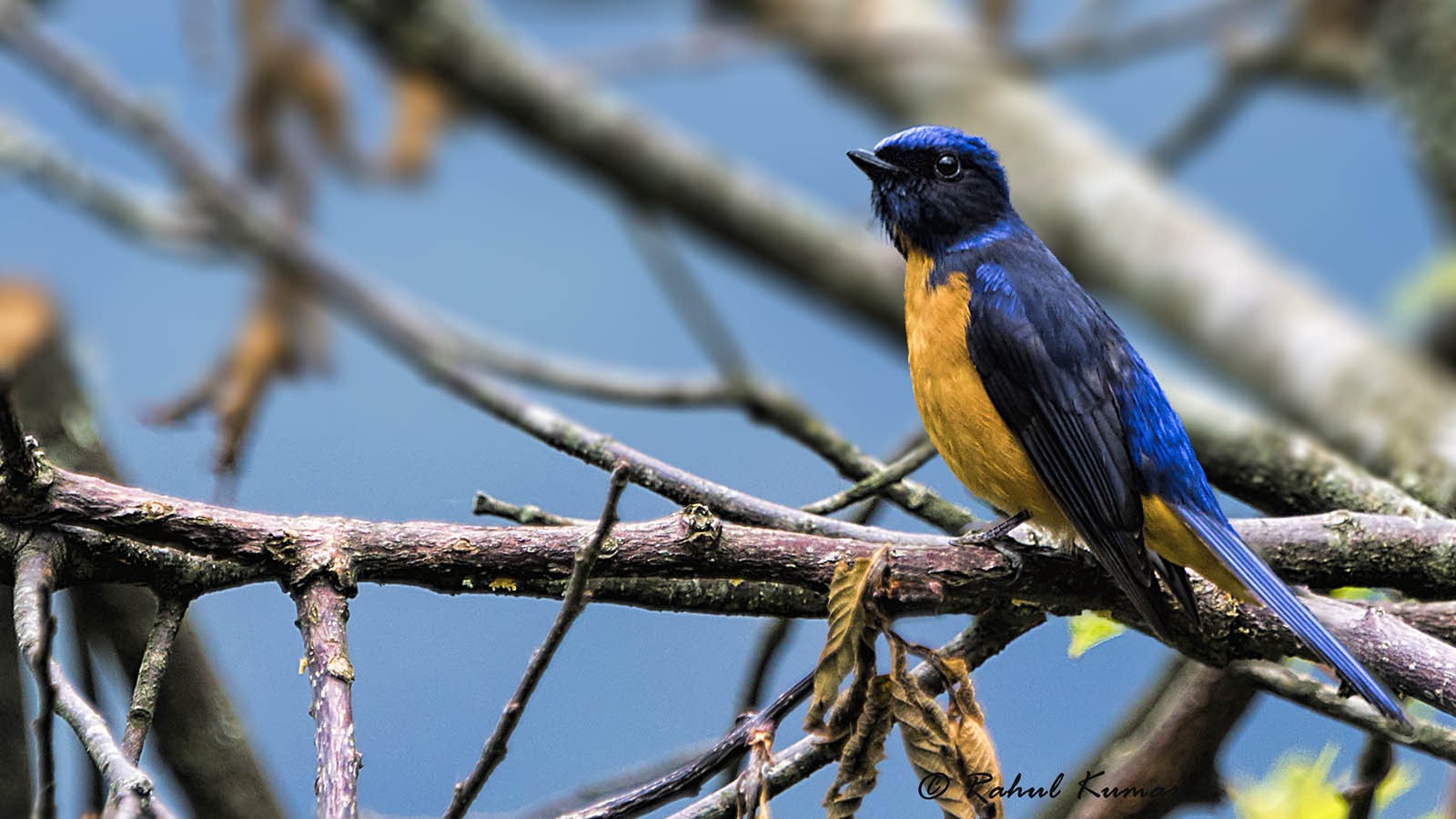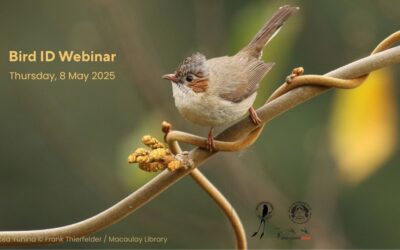The eBird/Clements world checklist is now updated and the entire list will reflect in your eBird account shortly. Among these updates are species splits and lumps; name changes; and the insertion of new spuhs, slashes, and so on. The number of changes for the birders in South Asia are small but some of them impact a large region. Here are the major changes relevant for us (See here for a complete list of changes).
‘2022’ LUMPS
LUMPS
Himalayan Shrike-Babbler Pteruthius ripleyi is lumped with Blyth’s Shrike-Babbler Pteruthius aeralatus:
There was considerable uncertainty over the years on what species of White-browed Shrike-Babbler occurs in different parts of Himalaya. It was broadly considered as Himalayan in the Western Himalaya and Blyth’s in the North-east India. Unfortunately, they look the same and even sound similar and field guides did little to elucidate the differences (if there were any). Hence, this particular change will be a great relief to the bird-watchers of all Himalayan regions – particularly from Nepal till Arunachal Pradesh. Now, all the birds can be assigned to a single species White-browed Shrike-Babbler and there is no need to worry about which species to use.
- White-browed Shrike-Babbler Pteruthius aeralatus [map] [media] [my records]
Singing Bushlark Mirafra cantillans is lumped with Australasian Bushlark Mirafra javanica:
In a reversal of fortunes, scientists found that the ‘Singing’ type Bushlarks found in Africa, Asia and Australia are all the same species despite there being substantial variations in plumage and vocalisation. To reflect this new understanding, the Singing Bushlark from South Asia and Africa has been lumped with the Australasian Lark of South-east Asia and Australia to be named Horsfield’s Bushlark. This name may not resonate well with birders in South Asia, but we will continue to use Singing Bushlark as the name in English (India) language preference.
Horsfield’s Bushlark Mirafra javanica [map] [media] [my records]
‘2022’ SPLITS
Mountain Imperial-Pigeon Ducula badia is split:
An expected split in eBird/Clements after IOC adopted this split earlier this year. The Western Ghats gets a new endemic species in the form of Malabar Imperial Pigeon. It can be readily distinguished from the Mountain Imperial Pigeon of North-east India and South-east Asia by the iris colour (dark vs pale) and the narrow tail band. The bird also has a slower booming call compared to its north-eastern counterpart.
- Mountain Imperial-Pigeon Ducula badia [map] [media] [my records]
- Malabar Imperial-Pigeon Ducula cuprea [map] [media] [my records]
Black-throated Prinia Prinia atrogularis is split:
Another expected split, which is already treated as two species in the second edition of Birds of South Asia – The Ripley Guide (Rasmussen & Anderton 2012). The population of Black-throated Prinia from Nagaland, Manipur, Meghalaya, Cachar, and Mizoram has been split from its northern counterpart to an independent species by name Rufous-crowned Prinia. While the range statement itself will help in suggesting the right species, their plumage is also quite different – particularly in non-breeding plumage. Remember, birders may have a name confusion with Rufous-fronted Prinia which has a completely different distribution and habitat.
- Black-throated Prinia Prinia atrogularis [map] [media] [my records]
- Rufous-crowned Prinia Prinia khasiana [map] [media] [my records]
Coral-billed Scimitar-Babbler Pomatorhinus ferruginosus is split:
Yet another expected split, which is already treated as two species in the second edition of Birds of South Asia – The Ripley Guide (Rasmussen & Anderton 2012). However, birders should note the two new names – Black-crowned Scimitar Babbler and Brown-crowned Scimitar Babbler. Note, Brown-crowned Scimitar-Babbler has distribution in South-East Asia as well, but the Indian population have an underpart colouration that is more like that of the Black-crowned. The distribution of Brown-crowned Scimitar-Babbler starts from Namdapha region and extends through the hill states of north-east India. So, if you have seen a Coral-billed Scimitar Babbler only in Sikkim, North Bengal, Bhutan, Eaglenest or Mishmi hills – then there is one more species you need for your India lifelist!
- Black-crowned Scimitar-Babbler Pomatorhinus ferruginosus [map] [media] [my records]
- Brown-crowned Scimitar-Babbler Pomatorhinus phayrei [map] [media] [my records]
Woolly-necked Stork Ciconia episcopus is split:
Woolly-necked Stork has been split – with the African birds being a different species. Our birds take the new name Asian Woolly-necked Stork. For such a widespread species, this is one change all of us have to get used to.
- Asian Woolly-necked Stork Ciconia episcopus [map] [media] [my records]
- African Woolly-necked Stork Ciconia microscelis [map] [media] [my records]
Green Bee-eater Merops orientalis is split
The widespread Green Bee-eater has been split – with the Arabian and African birds being two different species. Our birds take the new name Asian Green Bee-eater. Another name that we have to get used to.
- Asian Green Bee-eater Merops orientalis [map] [media] [my records]
- Arabian Green Bee-eater Merops cyanophrys [map] [media] [my records]
- African Green Bee-eater Merops viridissimus [map] [media] [my records]
Asian Pied Starling Gracupica contra is split:
Asian Pied Starling is split into three species. With the extralimital Siamese Pied Starling and Javan Pied Starling now accorded full species status, our birds will now have a new name Indian Pied Starling.
- Indian Pied Starling Gracupica contra [map] [media] [my records]
- Siamese Pied Starling Gracupica floweri [map] [media] [my records]
- Javan Pied Starling Gracupica jalla [map] [media] [my records]
Vivid Niltava Niltava vivida is split:
Vivid Niltava, the rarest of our Niltavas found only in certain parts of North-east India takes the new name Chinese Vivid Niltava, after the Taiwanese birds have been split from the continental Asian population.
- Chinese Vivid Niltava Niltava oatesi [map] [media] [my records]
- Taiwan Vivid Niltava Niltava vivida [map] [media] [my records]
Note: The full list of changes of changes can be seen here. If you use eBird Mobile, make sure you go to the App Store or Google Play Store and update to the latest version. That’ll make sure you have the new taxonomy and the most up-to-date lists for reporting.
Header Image: Chinese Vivid Niltava Niltava oatesi © Rahul Kumar/ Macaulay Library





Thanks for sharing Benerjee sb.Nice and valuable information.